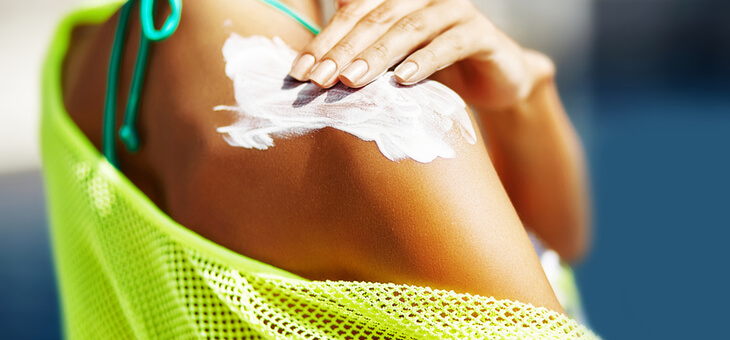Sunscreen is key to achieving an age-defying glow as it protects your skin from the sun’s harmful rays, but knowing exactly what you’re putting on your skin is equally important.
Deciphering the information on the back of a sunscreen container might feel like a daunting task but it shouldn’t. In fact, that should be your first red flag. If you don’t know what the ingredients are then you shouldn’t be putting it on your skin – simple as that!
Not just a preventative barrier, sunscreen can also work to assist your complexion. Take the opportunity to apply something that nourishes your skin and you’ll be rewarded for your efforts. Ditch the nasty parabens and reach for sunscreens with botanical actives that boost hydration and support collagen production.
READ: Common sunscreen mistakes to avoid
If your sunscreen has one of the following ingredients, I suggest it is time to make a switch.
Oxybenzone
The most worrisome of ingredients, this chemical is often present in sunscreens and is readily absorbed through the skin. It can work to disrupt your endocrine system, which regulates your hormones, potentially playing a role in infertility and, in extreme cases, the development of cancer. It can also result in allergic reactions, manifesting in the form of dermatitis. Instead, reach for sunscreens that include ingredients such as zinc oxide, a natural, physical sunscreen that is stable in chlorine and will help reduce the risk of skin irritation. It can even work to calm inflammation of your skin.
Octinoxate
An organic UV filter, this chemical is also readily absorbed through the skin. Studies show that this chemical can wreak havoc on your metabolic system and affect your thyroid’s ability to produce hormones. It also has the potential to trigger an allergic reaction following exposure to UV light. Not just nasty for humans, octinoxate has been proven to be harmful for aquatic life too.
READ: Skincare minimalism: What you need to know
Octocrylene
This chemical has been blamed for a relatively high rate of skin allergies with frequent use. It acts as a photosensitiser, increasing premature ageing and the risk of developing skin cancers. Instead, you should use products that include ingredients such as camellia seed oil and rosehip seed oil. Both provide an added level of hydration to nourish the skin.
Methylisothiazolinone
An inactive ingredient often used as a preservative in sunscreens, Methylisothiazolinone has been linked to serious cases of skin allergies, particularly in children. Alarmingly, use of the ingredient in leave-on cosmetic products such as sunscreen has been banned in the European Union, yet is still allowed in Australia.
Homosalate
Homosalate can be found in more than 300 TGA (Therapeutic Goods Administration) listed sunscreens on sale in Australia. It was recently investigated due to its impact as an endocrine disrupter and recommendations are that it be used at less than 1.4 per cent in cosmetics, which would deem it an ineffective sunscreen. In addition to direct health concerns following homosalate exposure, the chemical may also enhance the number of pesticides we absorb via our skin. Keep an eye out for this ingredient, most commonly found in many household tanning products.
READ: What causes common skin conditions?
The key to finding a great sunscreen is using one that you understand. You should be able to read the back of the bottle and feel satisfied with the products you’re putting on your skin every day.
Turn to brands that you know pride themselves on using therapeutic ingredients, and you can be confident that each of the natural ingredients listed have been carefully selected to protect your skin.
Anna Mitsios is a naturopath and nutritionist and founder of Edible Beauty Australia.
Are you confident that your sunscreen is safe for everyday use? Have you ever had allergic reactions to a sunscreen? Why not share your experience in the comments section below?
If you enjoy our content, don’t keep it to yourself. Share our free eNews with your friends and encourage them to sign up.

